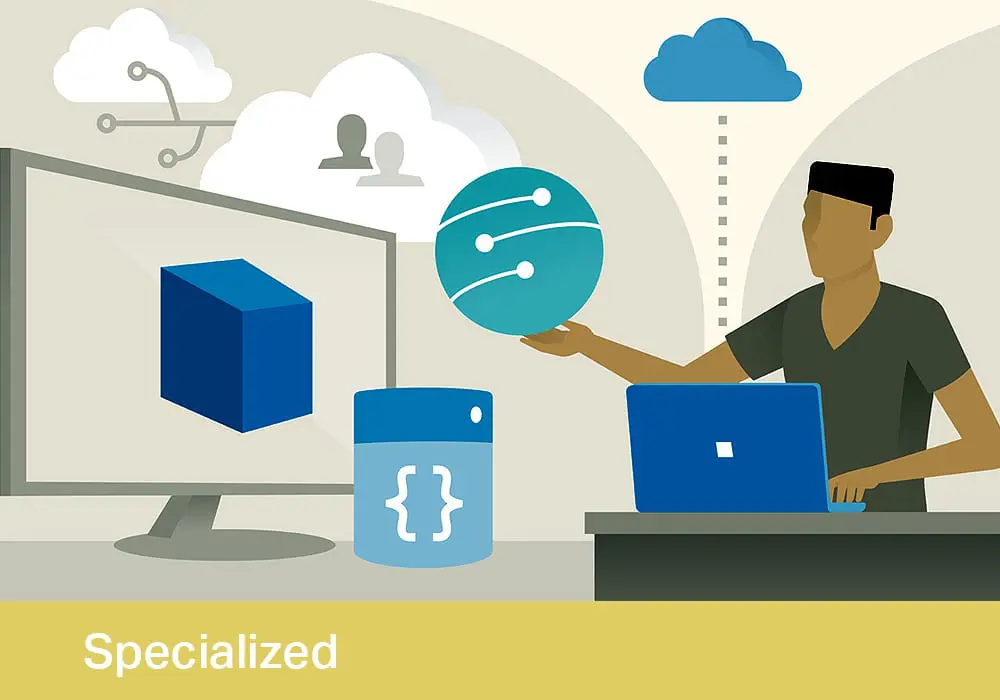In this course you will learn how to develop robust architectures for enterprise Java applications. Learn how to use Java Platform, Enterprise Edition (Java EE) technology.
This course is aimed at Architects, Developers, J2EE Developers and Java EE Developers.
Upon completion you will know how to:
- Define the Enterprise Architect’s roles, responsibilities and deliverables.
- Identify non-functional requirements (NFRs) and describe common problems and solutions.
- Translate business requirements into an architecture.
- Weigh choices in architecting the client, web, business, integration and data tiers.
- Apply various evaluation criteria to choosing architectural elements and patterns, tools, servers and frameworks.
Students need to have:
- Describe distributed computing and communication concepts
- Describe, in outline form, all Java EE technologies, including Enterprise JavaBeans, servlets, JavaServer Pages, and
JavaServer Faces - Perform analysis and design of object-oriented software systems
- Use a notation, such as the UML, for modeling object-oriented systems
- Object-Oriented Analysis and Design Using UML
- Java Design Patterns
- Java EE 6: Develop Business Components with JMS & EJBs
- Java EE 6: Develop Web Components with Servlets & JSPs
Introducing Enterprise Architecture
- What is Enterprise Architecture?
- An Architect’s Roles and Responsibilities
Introducing Fundamental Architectural Concepts
- Distinguish between architecture and design
- Architectural Patterns
- Architectural Deliverable Artifacts
- What is an Enterprise Architecture Framework
- 4 + 1 View Model
- Architectural Modeling Using UML
- Architecture Workflow
- What is an Enterprise Architecture Framework
Developing a Security Architecture
- Analyzing the Impact of Security in Distributed Computing
- Examining Security in the Java EE Technology
- Understanding Web Services Security
Understanding Non-Functional Requirements
- Examining Non-Functional Requirements (NFRs)
- Common Practices for Improving Qualities
- Prioritizing Quality-of-Service (QoS) Requirements
- Inspecting QoS Requirements for Trade-offs
Defining Common Problems and Solutions: Risk Factors and System Flexibility
- Identifying Risk Factors
- Designing a Flexible Object Model
- Defining Common Problems and Solutions: Network, Transaction and Capacity Planning
- Describing Network Communication Guidelines
- Justifying the Use of Transactions
- Planning System Capacity
Java EE 7 Overview
- Describe the new features in Java EE 7
- Describe the impact of Java EE 7 features on J2EE, Java EE 5 and 6 architectures
Developing an Architecture for the Client Tier
- Client Tier Development Roles
- Information Architecture Client Concerns
- Selecting User Interface Devices and Technologies
- Discovering Reusability in the Client Tier
- Deployment Strategies for the User Interface
- Security Concerns in the Client Tier
- Testing
Developing an Architecture for the Web Tier
- Responsibilities of the Web Tier
- Seperation of Concerns
- Comparing Web Tier Frameworks
- Providing Security in the Web Tier
- Scaling the Web Tier
Developing an Architecture for the Business Tier
- Business Tier Technologies
- Architecting the Domain Model
- Development Best Practices
- Developing an Architecture for the Integration and Resource Tiers
- Examining Enterprise Information System Integration
- Reviewing Java Integration Technologies
- Applying Integration Patterns
- Examining Service-Oriented Architecture (SOA)
Evaluating the Software Architecture
- Evaluating Software Architectures
- Evaluating Java EE Technologies
- Creating System Prototypes
- Selecting Servers and Frameworks
Nu există cursuri recomandate după finalizarea acestui curs.
Nu sunt programe de ceritifcare pentru acest curs.


